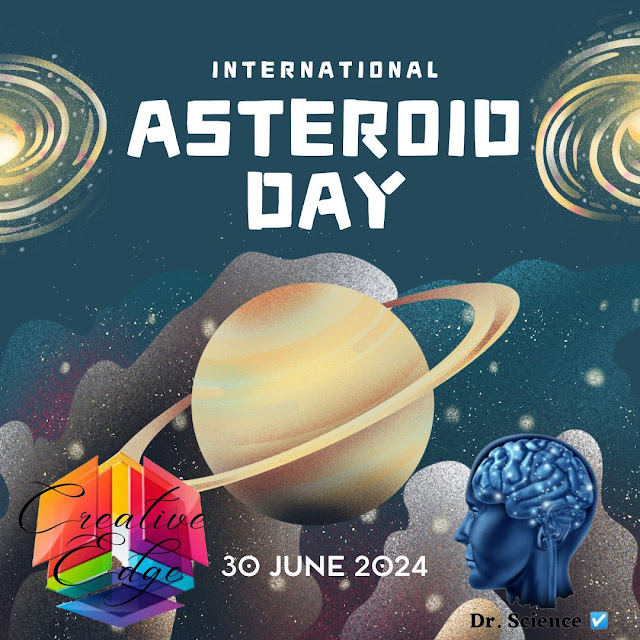What Is
International Asteroid Day?
International
Asteroid Day is a global event dedicated to educating the public about
asteroids, their impact on Earth, and the ways we can protect our planet from
potential asteroid threats. It serves as a reminder of the importance of
vigilance and scientific advancement in monitoring the skies.
Why Is June 30 an Asteroid Day?
June
30th was chosen to mark International Asteroid Day because it commemorates the
Tunguska event, the most significant asteroid impact in recent history, which
devastated over 2,000 square kilometers of forest in Siberia on this day in
1908.
On this day in 1908, a massive explosion occurred in Siberia, believed to be caused by an asteroid or comet exploding in the atmosphere. This event released the energy equivalent of up to 15 million tons of TNT, flattening around 2,000 square kilometers of forest and knocking down 80 million trees. Despite occurring in a remote area, the explosion had global atmospheric effects, such as brighter nights and vivid sunsets due to particles dispersed in the upper atmosphere. The Tunguska event is a stark reminder of the potential dangers posed by near-Earth objects and underscores the importance of vigilant monitoring and global cooperation in planetary defense.
Five Fun Facts About Asteroids
- Asteroids are sometimes called minor planets or planetoids, and they primarily reside in the asteroid belt between Mars and Jupiter.
- The largest asteroid in the asteroid belt is Ceres, which is also classified as a dwarf planet and makes up about a third of the mass of the asteroid belt.
- Asteroids vary widely in size, from the tiny boulders of just a few meters across to Ceres, which is about 940 kilometers in diameter.
- Some asteroids have moons. For example, the large asteroid Ida has a tiny moon named Dactyl.
- Asteroids can have different compositions, including rock, metal, or a mixture of both, telling us about the early solar system's formation and history.
What Happens
on Asteroid Day?
International
Asteroid Day is celebrated to raise public awareness about the potential hazard
of asteroid impacts and to stress the importance of tracking asteroids and
implementing defense strategies. It emphasizes global cooperation in using
science and technology to safeguard our planet.
What Happens on Asteroid Day?
Various
educational and scientific activities take place on International Asteroid Day
to increase awareness and knowledge about asteroids. The day features lectures,
workshops, public stargazing sessions, and interactive displays led by experts.
Schools and educational institutions engage students with asteroid-themed
projects and competitions to educate the public about the significance of
asteroids in our solar system and the necessity of global efforts in planetary
defense.
Here are a few tips on how to celebrate International Asteroid Day 2024 with your children:
- Educational Workshops and Lectures: Experts and scientists give talks on the nature of asteroids, their history, and the potential threats they pose.
- Public Stargazing Sessions: Organizations set up telescopes for the public to observe the night sky and potentially spot asteroids.
- Movie Screenings and Documentaries: Films about space and asteroid impacts are shown to educate and entertain.
- School Projects and Competitions: Students engage in asteroid-themed competitions and projects, such as model-making or writing assignments.
- Online Webinars and Discussions: Virtual events connect people worldwide to discuss asteroid science and exploration.

Comments
Post a Comment